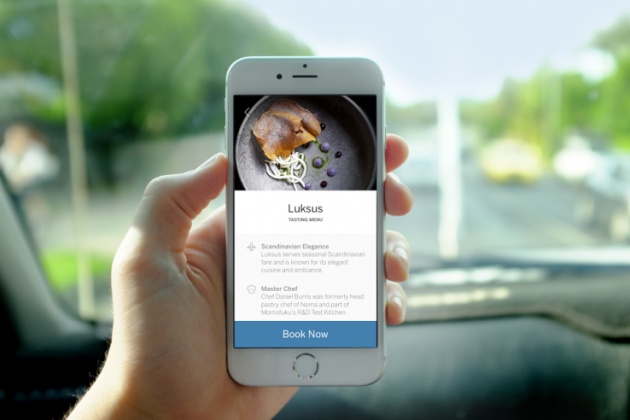
Sosh has today launched Concierge, the Uber equivalent for dining, in New York city.
Concierge essentially reserves tasting menu inventory for the Sosh community, allowing users to reserve a table at a hot restaurant and pay for their prix fixe meal all through the app. This means the user simply arrives at the restaurant, eats, and bounces out of there, Uber-style. In fact, Concierge even lets users book an Uber through the app to get to their reservation on time.
Concierge has been available in San Francisco since August, but is today launching in its second market with NYC.
The service has performed well in SF, with zero cancellations on the platform and Sosh having filled every single reservation that its partner restaurants have put on the platform. Sosh Concierge not only offers a unified experience from planning a reservation to walking out of the restaurant, but it also asks the user to pay for their meal, not the reservation, as is the case with competing apps like Resy.
The idea here is that social activity planning (Sosh founder Rishi Mandal calls it ‘local leisure’) is an experience that requires multiple platforms and services. In short, it’s a retail category that is highly fragmented across digital. Sosh aims to unify that, not only through the Uber-like Concierge service for restaurants (which is the most popular category on the platform), but with its Sosh Marketplace.
The Sosh Marketplace lets local bar owners, artists, chefs, etc. plan their own workshops or events, which can be sold on the Sosh platform. Sosh tailors each user’s feed based on preferences, interests, weather, time of day, etc. to try and boost conversion rates for merchants, as well as providing a valuable consumer experience.
According to Mandal, Sosh is growing with weekly transactions up 35x over the past year and weekly revenue “consistently doubling every 10 weeks for over a year.”
The company plans on expanding Concierge service to markets like DC, Chicago and Seattle soon, but therein lies one of Sosh’s greatest challenges.
Sosh launches new markets with an editorial product, one that provides curated experiences based on taste and weather, etc. but one that does not offer an end-to-end experience, allowing users to browse, purchase tickets or food, and leave the rest to the app. Once Sosh gets to a certain density on the user side, the company can then go to local merchants and restaurants and convince them of Sosh’s viability as a marketing and sales tool.
“The major difference between our marketplace and one like Airbnb or Uber is that we have a fixed supply marketplace, and we have to fit into the existing infrastructure — from pricing to inventory to sales — for a number of different verticals,” said Mandal. “We have to focus our efforts on being continually valuable to our merchants.”
That’s why Mandal is focusing so much energy on data collection, both on user habits and on actual event and leisure info in various cities. The goal is to shorten the process of setting up Sosh in a given area, by using data to determine the hottest things to do in a given city at any given moment.
Sosh has raised a total of $16.3 million across four rounds, most recently a $10.1 million Series B led by Khosla Ventures.



